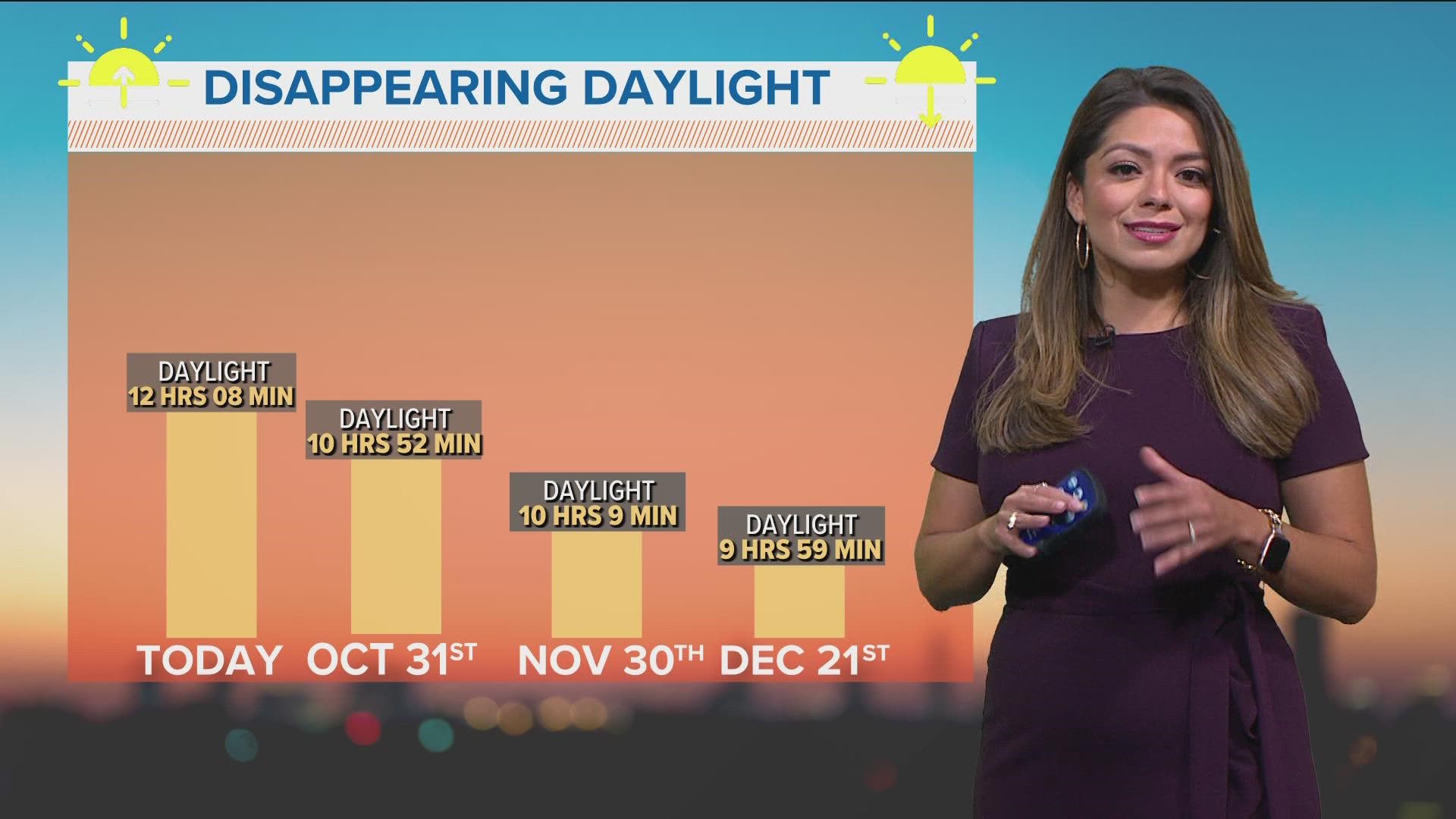Even though pumpkin spice and everything nice appeared in our social threads a few weeks ago, the fall equinox officially arrives Thursday, Sept. 22, at 8:03 p.m. It happens at the same time across the world although times vary from year to year.
Also known as the autumn equinox, it is an astronomical event that marks the beginning of our transitional months that take us from summer to winter.
During an equinox, the sun's center crosses the directly over the equator. This happens twice a year - the autumn equinox and the spring equinox.
Today, the center of the sun crosses the equator from north to south. This marks the start of fall in the northern hemisphere and the start of spring in the southern hemisphere.
This also signals the beginning of the harvest season.
What changes?
- Daylight
Equinox comes from Latin roots aequus meaning equal and nox meaning night. During an equinox, daytime and nighttime are about the same length. For DFW specifically, today roughly contains12 hrs. and 8 min of daylight. We actually have 12 hrs. of daylight closer to September 26th.
From now until the winter solstice, days become shorter as the sun rises later and sets sooner. We will roughly lose about two minutes of daylight every day until December 21st when daylight drops to about 10 hrs.
- Foliage
Shorter days means less sunshine. This cues certain plants to slow down photosynthesis which produces chlorophyll. Chlorophyll is green and when production of this slows and eventually stops, the plant's natural colors come through - think yellow, oranges, reds.
- Temperature
Meteorological fall begins Sept. 1 and ends Nov. 30. It marks the three months between the warmest months of the year and the coolest months of the year.
On average, normal highs at the beginning of fall are near 87 degrees while normal highs at the end of fall are near 57 degrees.

